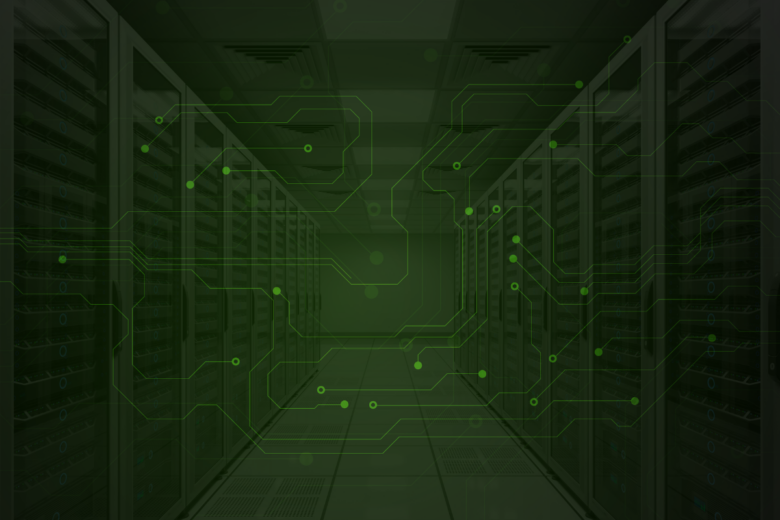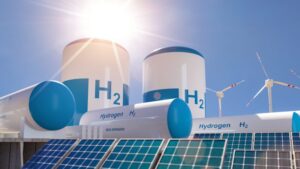The Internet has become an indispensable part of modern life, but few people realize the damage it has done to the world. Traditional data centers are large buildings full of servers that consume much energy, exacerbating climate change and carbon emissions. On the other hand, green data centers represent a new wave of innovation that is revolutionizing the industry. To minimize their impact on the environment, these eco-friendly buildings use advanced cooling systems, renewable energy, and hardware that uses less energy. Green data centers are the future of digital infrastructure, as people and businesses demand greener technology. This article explains what they are, how they work, and how they can make the Internet cleaner and greener.
The Environmental Impact of Traditional Data Centers:
Data centers store and process everything from email to streaming movies. They are the backbone of the network. On the other hand, they consume a lot of energy: almost 1% of the world’s electricity. Most of these vehicles run on fossil fuels, which emit large amounts of carbon into the air. In addition, standard cooling systems consume significant amounts of water and energy to prevent servers from overheating. As the demand for artificial intelligence and cloud computing continues to grow, long-term solutions are more important than ever. The tech world is finally starting to wake up to this problem, allowing green data centers to become the norm.
How to Reduce Electricity Consumption in Green Data Centers:
Green data centers use advanced technology and smart design to reduce energy waste. In addition to coal and natural gas, it is also important to use renewable energy sources such as solar, wind, and hydropower. Today, 100% green energy is used to power data centers for companies like Google and Microsoft. Liquid cooling is another major improvement. It works much better than standard air cooling. Some buildings even use artificial intelligence to process energy so that they always use as little electricity as possible. When these new ideas are combined, green data centers can use up to 40% less energy than regular data centers.
What Role Does Sustainable Architecture Play in a Data Center?
A key factor in making a data center cleaner is the design of the building. Many new buildings use natural methods to stay cool, such as using outside air or seawater. Others are underground or built in cold locations and therefore do not need as much cooling. Modular data centers consist of small, scalable components that allow companies to grow without wasting too much energy. Some green data centers also use energy storage systems (such as batteries or thermal energy storage) to regulate energy demand. There is a link between sustainability and excellent performance in the design of these new buildings.
Companies Pledge to Build Green Data Centers:
Big tech companies are leading the way in greening data centers. Amazon Web Services (AWS) has pledged to use only green energy by 2025. Microsoft is testing natural cooling in underwater data centers. Apple has made all of its buildings carbon neutral, while Facebook’s data centers use solar and wind power. Both large and small companies are adopting green practices, demonstrating that sustainability can be achieved regardless of size. These commitments demonstrate that businesses are aware of their responsibility to protect the environment and are taking action.
The Future of Green Data Centers:
The journey to a green data center is just beginning. New technologies like hydrogen fuel cells and quantum computers can reduce energy consumption even further. Governments are also encouraging greener IT infrastructure by introducing regulations. As people become increasingly concerned about the environment, companies that adopt a sustainable approach to data can stay ahead of the competition. What’s the ultimate goal? A carbon-neutral internet means that every search, stream, and download has virtually no impact on the planet. As long as people keep coming up with new ideas, this goal is achievable.
Conclusion:
The internet will still be here, but the way we power it will get better. Green data centers are an important step toward a more sustainable digital future. They demonstrate the seamless integration of technology and environmental protection. These new ideas, like using green energy and artificial intelligence to improve efficiency, can reduce waste without sacrificing effectiveness. As more companies go green, the carbon impact of the grid will decrease. This process is beneficial for business and the environment. The growing popularity of green data centers is more than just a trend; it’s a necessary change. We can all help move the web forward by supporting this change without wasting money. This initiative will make the internet cleaner and greener for the benefit of future generations.
FAQs:
1. What makes a data center “green”?
To minimize their impact on the world, green data centers use advanced cooling systems, energy-efficient hardware, and renewable energy.
2. How much energy does a green data center save compared to a regular data center?
Green data centers can reduce energy consumption by 30% to 40% or more, depending on the technology used.
3. Is it more expensive to build a green data center?
Initially, yes. However, over time, green data centers usually become more cost-effective due to savings on energy and other operational costs.
4. Can small businesses use green data centers?
Yes! Many cloud providers offer environmentally friendly hosting options. This means that businesses of all sizes can reduce their digital carbon footprint.
5. If we switch to a green data center, will internet speeds be slower?
No, green data centers are just as fast and reliable as regular data centers, but have a lower impact on the environment.




